#Neuro 24 Brain
Explore tagged Tumblr posts
Text
The discovery that hypnotic states could be used for market regulatory purposes was nothing short of a revolution for the Federal Reseve. in June 1968, Initial experiments with "financial clairvoyance" were conducted.
The original methodology was fairly simple: fully trained subjects would be placed in a sensory deprivation tank and undergo hypnosonic neuro-induction to the point of sub-finantial emanation. Subjects would remain attuned for 24 hours, at which point they would be de-emanated, and their experiences recorded via interview.
This methodology proved to be an expensive disaster. Repeated cycles of emanation and de-emanation had a catastrophic effect on mental cohesion. On average, subjects would begin to show signs of neuro-depatterning within the first 50 dives, and would slip into permanent catatonia by 350 dives.
Additionally, recovered documents from the period show that information from a single Plutophant was only accurate to within a 2.2i Murdoch deviations, and the interview method introduced a further 5.1i of uncertainty. While experimental attempts to record brain activity directly were underway, technology was primitive, often harmful to the subject, or necessitated invasive surgical modification. Even then, transchronological brain activity proved uniquely difficult to record.
Then, a breakthrough.
The 1960 nationwide upgrade of the minuteman nuclear system was underway, which created a surplus of IBM Drum Storage Drives. Drives that were largely donated to research institutions under the purview of project Clover. With some modifications, the cyclical nature these drum drives proved to be ideal for recording changes in transchronological neuropatterning.
These "Radio-Magnetic Neurological Sensory Arrays" were the predecessor to the modern neuroscope. The first production example, the IBM Y-2, was the size of an entire room, requiring enormous amounts of power and several trained technicians to process the thoughts of a single Plutophant into a human-readable form.
Study is ongoing.
651 notes
·
View notes
Text

This is a post no mom ever wants to have to make but if I’ve ever needed my prayer warriors to come together it’s now. Our precious Asher Zane was born 03/12/24 at 9:14pm weighing 8lbs 9oz & 19 1/2 inches long. When he came out his oxygen was staying around 70 so they took him to the nursery to put him on oxygen. He stayed in the nursery all night and was eventually weaned off this morning around 9. Since then his oxygen has thankfully stayed up on its own. Today while the doctor made his rounds he made the decision to do a CT scan due to the swelling on the left side of his head. Our sweet boy has a brain bleed and is about to be flown to Children’s to meet with a neuro team. I know my God performs miracles every day and I just pray for the hands taking care of my baby. I know he can heal my son!! If you are the praying type, please please pray for Asher’s healing. 💔
Not my baby. Found on Facebook.
54 notes
·
View notes
Note
U went off the maps when will u be back writing?
hopefully i’ll be back to writing soon. my mental and physical health have taken a turn, so i’m mainly focused on that right now. i’m having these god awful migraines that leave me in bed for most of the day. my room is the only place i can get them to stop. i think it’s because it’s dark and at the very end of the house so it’s quiet. any type of light irritates it. especially screens. tv, phone, or computer. because of that i’ve mainly been sleeping— if my brain doesn’t feel like it’s being kicked repeatedly by a footballer at max force. i’ve never had my fucking head hurt like this before. im talking it starts tingling, throbbing, and it’s even hard for me to talk. i’ve also been forgetting shit so much. the main ones are: i keep leaving one of the fridge doors open or forgetting something important out of it on the counter, and forgetting words i should know. stupid shit like “clipboard” or “sponge” will just slip my mind for 5/10 minutes. i was scheduled for a neuro exam, but as of January 1st my insurance switched to united healthcare (yes THAT united healthcare.) so now i have to go back to my neurologist, get the order put back in, wait to see if this new insurance approves it, and then wait god knows how long for the actual evaluation date. (if it even gets approved😀) but i’ll be back to posting after my headaches or migraines or whatever these god awful head pains are lessen up or go away completely. no over the counter meds have helped so far, and the one my doctor prescribed made me sick. so if y’all know some old grandma hacks about getting rid of head pain PLEASE TELL ME. i’ve tried wearing my glasses 24/7 to not stress my eyes, caffeine, ice packs, chugging iced water to get a brain freeze, hot teas, essential oils, and hell i’ve even tried yoga. i will try ANYTHING at this point. anyways that’s enough trauma dumping for today. sorry for going MIA on y’all, but i’ve resorted to lying in my bed with the curtains drawn and basking in the dark lol. see ya soon my lovelies 🩷
#asks.daph#daph.rambles#daph is in medical crisis#like actually#i’d take passing out over this any fucking day
7 notes
·
View notes
Text
Better?
In the ongoing saga of figuring out my child's healthcare needs we stopped his daily asthma medication. After an August 3-4 weeks of a terrible asthma flare up which ended up with a does of steroids' we decided to try a maintenance med. I had been very reluctant because the side effects can be hyperactivity/aggression. More hyperactivity is the last thing my child needs. His behavior had been pretty out of control during his August asthma flare up. We notified the school nurse about the med update - who had encouraged me to try out the med. I thought I told the teacher but maybe did not.
Anyone it seemed to be working really well. He was not coughing in October for the first time in years. We hadn't noticed any behavior changes. However, he was not sleeping well. Which is very abnormal for him. This had started during the summer asthma flare up - so assumed it was that. It makes sense you won't sleep well if you are coughing constantly and generally feel shitty.
The school had not reported any behavior changes to us. I ask regularly - while trying not to be too annoying. She noted he has good days and bad days hyperactivity wise. Which is the norm.
Then the neuro psych office sent someone by to do an in class assessment. Apparently his behavior was really terrible. He had a really terrible in office assessment the day before. I'm assuming it was a hold over from that. Also the teacher told us "someone" told him the neuro was there to assess him. The whole point of sending a different nuero was so he would not know they were monitoring him. He does not like being assessed. The teacher also tells the neuro pscyh his behavior has gotten worse and worse over the last month. She thought it was because the class had added two other high energy boys. Which is entirely possible. He def matches other kids energy. Or it could be because of the meds!! If the teacher had discussed with us I would have 100% considered that. I was on the look out for bad behavior. I am so annoyed the teacher did not tell us. The Director of the school apologized. The teacher said she is always "transparent" with the Neuropsychs. As if, we didn't want her to be transparent. We expected her to be transparent with us first! I had seen her the day before the in class assessment. She mentioned how he is really nice to the younger kids. Then said he has good and bad days. She mentioned he had been putting things in his mouth. I said I'd send in chewy necklace. None of this screams "behavior has gotten worse and worse."
Anyway we can't risk more hyperactivity. Talked with his doctor and took him off the same day. He fell asleep immediately that night. He's been back to sleeping really well every night since. Seems calmer to me. His teacher says he has been better over the past week. But the biggest difference is he has almost 100% stopped stuttering. Since August his occasional stutter that only came out when he was tired was happening all of the time. Since Friday I've heard it twice.
Now the question is was the medicine really changing his behavior? Or was the medicine causing sleep interruptions and that was causing the behavior changes? I suspect the stutter is because his brains moves faster than his mouth. The internet tells me its a common ADHD (and autism) thing. The problem is exacerbated when his body is especially out of wack/tired.
Of course, within 24 hours of stopping I can tell the cough was coming. It's not bad, yet. Just a few coughs here and there. It actually has not been cold outside here so will see what comes. Luckily, his asthma is entirely of the cough variant. His oxygen levels are always fine. Sometimes a little wheezing but nothing serious. No asthma "attacks."
There are various other asthma meds we could try but now I'm even more terrified to try anything. The poor kid's body is constantly fighting against him. It also does not bode well for trying ADHD meds. I feel like his body is always going to pick up the worse outcomes. Considering taking FMLA over the summer to try out some meds. If they make him more hyperactive/aggressive with us it's fine. It ill If he does it at school it can get him labeled.
I'm def not going to give him a full steriods dose again unless its a real medical emergency. His behavior was out of control for a week after that.
The two other high energy boys were moved to a different class. Not sure why, obviously not my business. Someone mentioned they are going to add another teacher to his class. I'm going to follow-up to see if that is true. I'm reminding myself that teachers are very busy. My kid is one of 12 kids. Its probably not fun to report bad behavior to parents and some people are better at it than others.
Going to his school tmrw for the Halloween parade. Looking forward to it.
13 notes
·
View notes
Text
Unnamed MTNN story - the basic plot
Neuro and the Demon Emperor were born from a twin set of eggs. Neuro hatched first, thus, was the older one.

Why a twin? Because I need someone with equal power to kick his ass. I haven’t found a satisfying name for The Emperor yet. “Tic” as in “neurotic” is too lame. Need to search for some brain illness in the future.
Neurodegenerative? Degenera? Degen?
For now, just call him Emp for short.
They look quite alike, same coloring, same build, same power level, same sadist personality, etc. but Neuro is more cunning and adventurous, while Emp is more serious and traditional-ish (he believes in “Fate” like all other demons in Hell).
With his power and birth-right, after they killed off the previous Demon Emperor, Neuro would have become one, but he hated the responsibilities, so he gleefully stomped those demons who suggested that into the ground then left, travelled around to search for mysteries (his food source). Emp is very respectful toward Neuro, often let him do whatever the hell he like. That’s why he told Yako that he didn’t look up to anyone in Hell and everyone else had to bow down to him when he passed by.
Neuro eats the negative energy people emit when they try to cover their crime. Emp eats the positive energy of someone who is happy and hopeful. So, when Hell ran out of positive energy, became the dark hole of misery it is today, Emp went into deep sleep, hibernated until things changed for the better, left everything in Neuro’s hand.
About 5 years after Neuro returned to the Above World from his three-year absence, the Demon Emperor wakes up from his hibernation. He calls for Neuro but can’t find him anywhere. When Emp finds out that Neuro moved to human world and has not returned since then, he goes after Neuro to take him back to Hell, because that world is too poisonous for a demon to live in, even if that demon is as powerful as his brother. Moreover, Emp believes that his brother’s rightful place is by his side in Hell, any otherwise options are simply not acceptable.
Move to the detectives, Neuro has almost become fully human, perhaps 70% already. He still stronger than a regular human but dangerously weakened. Yako is 24 years old, beautiful, well-known and very successful. She has her friends, family, her cases, and most importantly, her partner. Life can’t be happier and better in her opinion.
Neuro senses Emp’s arrival. He’s concerned about what could happen but doesn’t say anything.
When Emp crashes into their office, he sees Neuro’s condition, he is not happy. He asks Neuro to return to Hell for his health, Emp doesn’t want Neuro to become human, he wants his brother back. Neuro refuses, his goal, The Ultimate Mystery, has still not appeared yet. Emp doubts that is the reason he wants to stay in this world. He senses an extremely strong bond between Neuro and Yako, so he assumes that Yako has found a way to capture and tie his brother to her.
Emp tries to drain all of Yako’s positive energy so that she will become just a shell of her former self. Of course, Neuro will never let that happen to anyone, who’s under his protection, right in front of his eyes, let alone his dear partner. It’s a territorial thing, not that Neuro has become soft because he is almost a human already, really…
They fight. Neuro, to protect his right to stay in the Above World and his partner; Emp, to kill Yako and free Neuro from her clutch.
Soon, Neuro loses, badly injured. He is simply too weak for a fresh demon just come out of Hell.
Emp is about to take Neuro back to Hell, Yako interferes with Akane’s help and whichever side characters (I feel like drawing when I get to that part) back her up. They manage to distract Emp enough for Yako to take Neuro back from his grasp. Then, Emp squads them away like flies. He’s extremely pissed off. Emp kicks Yako away from Neuro and repairs to kill her for good this time.
But, to everyone’s surprise that he could still move, Neuro takes that hit for Yako. With no energy left to put it back together, his body breaks into dust. He simply smirks at her, whispers a half-heart insult: “What with that ugly face, top-slug? I… just need to shut my eyes… for a bit…” then collapses.
Two desperate screams can be heard that moment. One is inhuman and enraged, the other is in denial and heart-broken.
-----------------
Not sure what will happen next yet, just some random ideas.
Ultimate Mystery perhaps is Love. To be specific, the negative energy cause by repressing your love for someone you can’t have or the regret of losing that love without confessing (like in HAL case, Neuro acted like he was sugar-high after eating Hal’s mystery). That’s what Neuro has always been searching for but doesn’t have a clue what it actually is, because love is an alien concept to him.
Maybe? At least, a certain analysis on NeuYako livejournal forum believes so, and, personally, it makes a lot of senses to me. Need to reread it soon.
OK. So, Neuro gets the Ultimate Mystery mentioned above from Yako, and is revived (?) or evolved (?) like a Pokémon. Fight back and triumph over Emp. Teach Emp a lesson about not pushing his beak into places where he’s not wanted.
-----------------
PROBLEM:
- After that, Neuro won’t need to eat mysteries to survive anymore, he would stay a demon, or turn into a human, or become what? An angel? (if the theory that demon = fallen angel is true). Oh well, I like that theory so I may just take that ball and run with it. Or a… bird dragon? Hmm… Cool!
- Majin = evil person = a person without a heart. Then, if he gained a heart (aka love), he would simply become a person?
Ending… What ending?... Hmmm… Ok, clearly, Emp has to return to Hell. The two love-birds (pun intent) live happily ever after?
To be honest, there are many people think that Neuro will out-live Yako by centuries. But, to consider the difference in living environment, especially that human world is poisonous to Neuro’s health, I’m sure he will die far sooner than Yako if he keeps on staying there without coming back to Hell in between. In canon, the story happens during the span of more or less one year, live-or-dead battles aside, his health worsens considerably by the end. Becoming human or not, his condition’s going to detoriate as time passes and there’s nothing they can do to stop it. So… no, I don’t think they will ever get their happy-ever-after ending like in fairy tale.
Well, more reasons for Emp to drag Neuro’s ass back to Hell then…
If he has become almost a human, could he still be able to stand Hell’s environment when he came home? Are demon cells automatically revived whenever they contact with poisonous air in Hell?
Basically, human world = the ocean; mysteries = fishes; and Neuro = a seabird who try to live underwater hunting for fishes?
#majin tantei nougami neuro#mtnn#cringe#here you are: the plot summary and the author rambling#I just copy and paste the word document into this post#it seems that my preference for plot conflict have not changed at all 😂#it just moves from one fandom to another 🤣
5 notes
·
View notes
Text
life update - long
It took me a hot minute to find the last update. December, I guess? I'm so tired I never stop being tired and time is not real anymore. Anyway. Disability Stuff: I won my case in federal court in February. They said it'd take a year so I was a little hm. Found out the SSA voluntarily asked the judge for the remand because the written decision was indefensible and they were gonna take another look. Pros: Hey, I won! I get a second hearing! Cons: I didn't get a brief written by the federal law firm because there was no time. This is actually a tactic used by the SSA. I have no doubt they're fine tuning another denial. I also have to wait for the lower level court to figure out what was so bad about it (that they'd already ruled was perfect) to give to the judge I will have another hearing with. The same judge. Who said I was a liar multiple times and omitted eight months of medical evidence and said mental health issues are subjective hahaha. I hate this country. Health: Boy howdy it's been better and worse. I had the tilt table test in late December, went... ok enough, but my neuro didn't like how ambiguous the report was and sent me back to them to speak to an autonomic disorder specialist. Scheduled in Jan, just had my appt with her this month lol she is busy. She ordered: genetics test, labs, and skin biopsy. I've done the first two, third is scheduled in July and I'm gonna be a mess because needles u_u Brain stuff is much of the same. Episodic. Manageable times are a godsend, bad times are really bad. My heart started to do some funky ass shit a few months ago. My mom kept writing it off as anxiety no matter how much I explained that it felt like my heart was pounding after exercise. My BP and pulse shot up high for a while and b/c my pulse never came back down and it was interfering with, you know, living, my PCP sent me to cardiology. :') Cause I wanted my heart involved in this mess One 24hr holter monitor, echo, and heart ultrasound later, and I have a new heart condition. He said 'your heart is beating so fast you would normally see it with exercise' bada boom baby and has nothing to do with fucking ANXIETY >:[ I'm on heart medication. 10 meds. I need to start another med for my psych but that's 11 and I'm honestly getting upset because it's so fucking much medication in one day but every single one of them is necessary so what can really I do? Personal: Relationship with my mom is at an all time low. This is extremely unfortunate because a few weeks ago, my mom told me she is basically being 'laid off' (she's not losing her job for a while, just retiring earlier than expected) and I have to leave my home of 10 years by mid-August. Got no sympathy from her about it *finger guns* I've gone through the devastation of that and am kind of just stuck in how is any of that gonna work. My brother and I can't live together, so he's gonna move into a family friend's rental. Except he has no job and hasn't been able to get one in months. He started one on Monday, is gonna leave by Friday because it's horrific ig. Anyway my mom promises he won't be there. We have to move based on my disabilities and my mom's house is gonna have to reflect what we have here. I'll see it when I believe it. I don't trust her anymore. Extra unfortunate that I'm gonna be living 24/7 with my mother who has been an abusive person in my life the past two years. The short break thru the day that my apartment is just mine, quiet and gentle, is gonna be gone. I'll be introducing my solitary 11 year old cat Lilly into a house with 3 other cats. She only knew Isis her entire life. She was just diagnosed with neuro issues this year after going through an MRI. We don't know if she has seizure activity or if it's movement disorder, but the med she's on treats both and she has gotten better. Same process Isis went through. Cannot believe I have two cats with neuro issues and likely the same one. May 18th was one year since Isis passed. Rough, tiring day.
I don't know how it has been that long. Feels like it just happened. I can still see her and feel her through my apartment and losing it in August will probably shatter me most because of losing the last place she existed in. I miss her more than I can say.
She was my little soulmate and her absence is felt in every corner here. Writing/Fandom:
I went through a whole fucking situation over in the Stranger Things fandom that has left me not wanting to post anymore. Idk if neuro shit has destroyed my ability to write but it's humiliating and painful every time I post a fic.
I posted stucky (1 out of 2 fics this year) on my main acct and lost 8 fuckin user subs? Like goddamn. What'd stucky do 😭 anyway it was even more devastating and kinda like 'here's your big ass sign to keep your writing to yourself.'
Between the god awful shit that happened in the ST fandom and my inability to put together even a good one shot, I'm feeling really down about one of two creative things I can do in my life. I used to love sharing my stuff. I want to write and share but it feels like it's harming my MH. I can't draw or paint right now, either. And I can barely move around my apartment without pain. I can't even leave it except for doctor appointments.
Idk. Very walls are closing in type of feeling and I hate it. In short: I'm tired, struggling, and too many things are happening at once. I love you all 😩💜 thank you for your patience and love and kind words. Your support is felt through one update to the next. I hope you're all well and I'm sending all my love and hugs to you.
13 notes
·
View notes
Text
Dear r/systemscringe:
To follow up my last post, I have a slew of further evidence for you, alongside a special challenge.
Here is the site, Peerblock. Don't worry, I'm sure smarty pants like you guys will be able to figure out how to use it, if a silly psychotic like myself can. Go ahead and run the program, as long as you feel like running it. If any of you get even 1 result from the US Government, I will concede to you I'm just some silly psycho who doesn't know what I'm talking about.
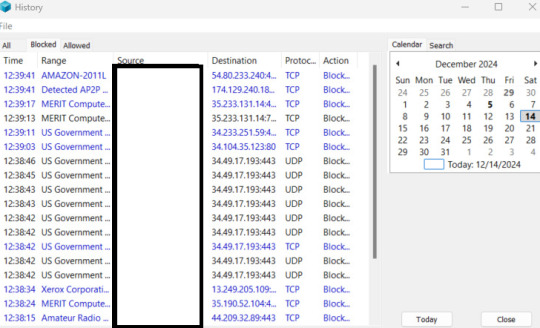
Check out the date. I made sure to pick today's current date and time to show you my last post wasn't a 1 off fluke several months ago. This is my computer, 24 hours a day, 7 days a week.
I don't generally go full ham trying to "prove" shit, but, since I was posted to systemscringe, and I find you all a bunch of sanctimonious fools, I'd love to see you try to debunk me. So, it seemed some of you doubted my information about DARPA (you didn't know it existed till I mentioned it, right?) I'm guessing you didn't look it up after I mentioned it, either. So in general, I'm going to share details about established psychological programs and methods in the defense industry specifically intended to alter and condition its subjects. This goes beyond DARPA, every intelligence agency and defense organizations, and thinktank in existence is knee deep on studying psychological manipulation.
Every screenshot I post will also have a link to the corresponding full pdf or article (you guys won't be able to understand the jargon, though, which is why I'm screenshotting the overviews - wanna test my understanding on any part? go ahead. send me an ask.)
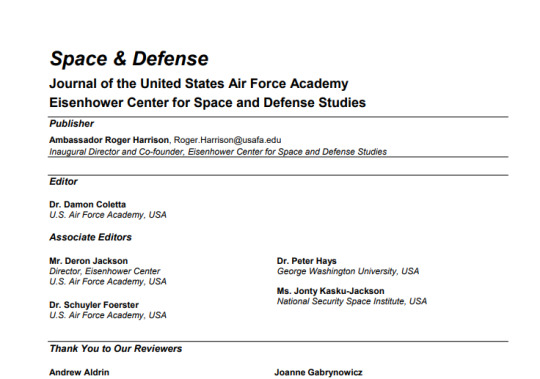
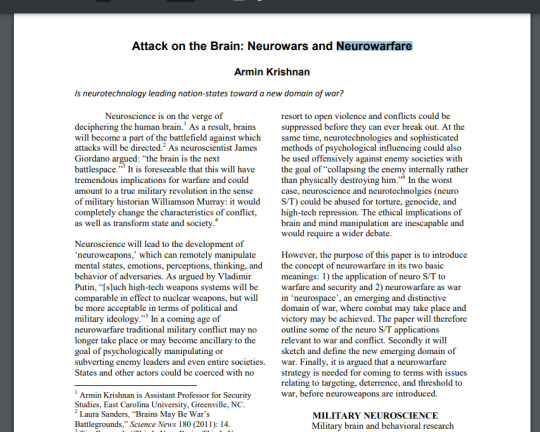
I actually have a friend who worked with a DARPA employee on technology that was meant to be used for "writing" thoughts to a persons brain physically. A far fetched claim, you'll agree.
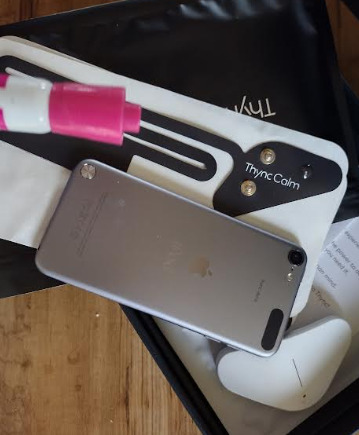
The back of that phone says, "Thync Alpha"
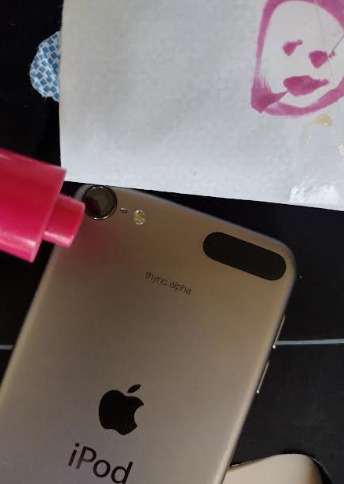
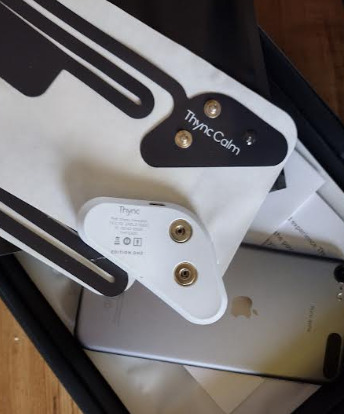
I'm just curious, how many instances of modern, defense/intelligence sanctioned psychological experimentation programs do I have to cite before you people STFU? I guess probably there is no limit on the amount of hard evidence a contrarian redditor can deny in order to stubbornly cleave to their false assumptions.
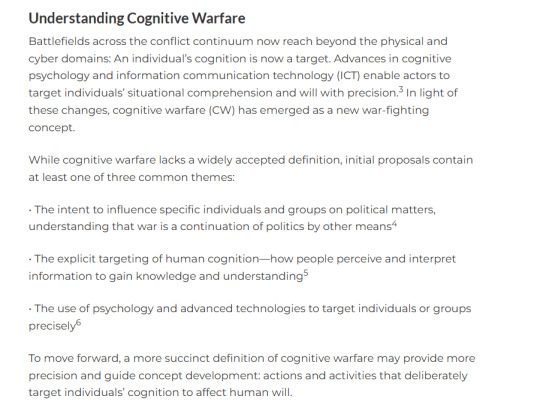
How about yet another PDF appropriately titled, "Cognitive Warfare"?:
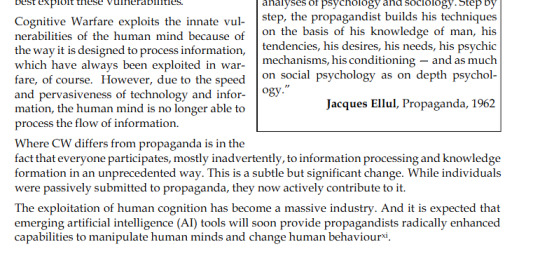
but nah, r/systemscringe knows way better than DARPA and the US Military, that psychological manipulation, conditioning, and programming for the purposes of control just cannot happen. That was abandoned in the 70s, didn't you hear? That is the end of it. Good thing people won't actually look into the subject and pull up official public documents that are required by these various agencies to be on record. They can rely upon people like you, r/systemscringe, to keep the world from protesting against the ethics of 'cognitive warfare'.
Remember how I said that mind control/coercive influence (they don't call it fucking mind control, *duh*) is widely in use in the military, to condition soldiers properly for combat? This isn't a fact in dispute, or even a secret.
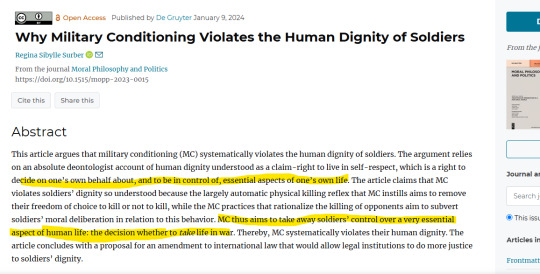
Here is an article from an Indian Defense Studies website.
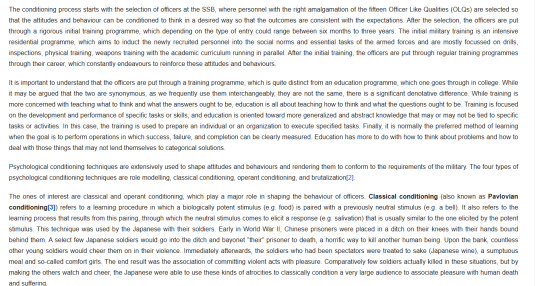
The author looks pretty credible, huh?

When I said that I can't stand all of this bullshit about how "psychological programming is not possible", I meant it. Your first mistake was to assume that just because I refuse to tell you about the exact, specific, advanced methodology, I lack any evidence to show you. I don't. I could go on, and on, and on. I could write you a thesis.
Here is proof from the illustrious Stanford Research Institute that defense organizations are utilizing and studying Neuro Linguistic Programming - a psychological influence technique in widespread modern use in some contexts, especially including defense and intelligence, but also business and sales.
You could argue this isn't a fair one because it's a study of another nation's use of the technique, but it still contributes to the overall thesis that this stuff exists, plain and simple, no matter who you want to ascribe the source to. That's a very important point to be made here.
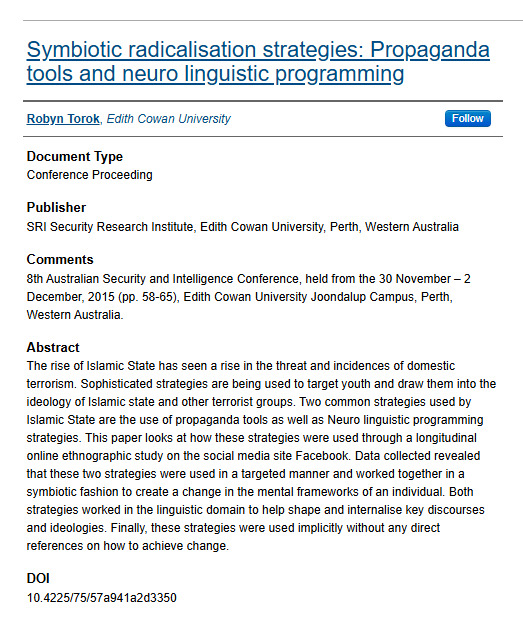
If you truly want to find some of your own sources, go ahead and search, "Enhanced Interrogation Tactics" - "BSCT" was a hint, dudes. Here is what BSCTs do.
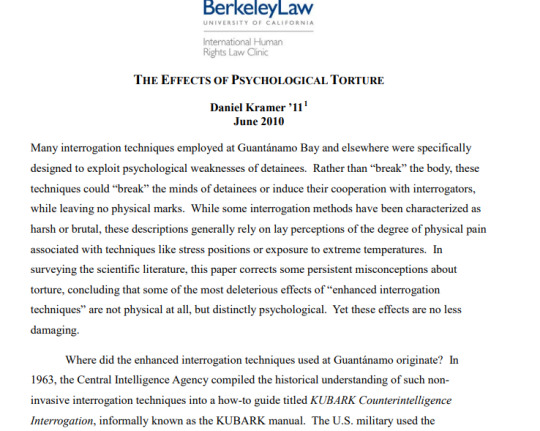
Wow, it's almost like psychological torture is a form of mind control. It's almost like what I said is complete and total fact.
I guess one of you may argue that these programs, while they support my point about the existence and importance of psychological manipulation in the defense and intelligence sectors, are only for use internationally, and would not be used on private citizens, especially the likes of some random chick. Except, oops, it already was used domestically.
What exactly makes you think that if it could fly in the 70s, it couldn't fly today? Do you realize that even back in the 70s, the MK Ultra program still violated the Geneva Convention? So why do you think that magically, the ethics of this stuff have improved?
Perhaps, juuuust perhaps, I'm not some random person with no background in these areas after all? That maybe there actually are things about my background that would justify psychological control of me through psychological conditioning? That perhaps there is a reason I can easily read and interpret the jargon of these articles, which a "normal" person could never even *find*?
If any of you from system cringe want to message me here and challenge my understanding of these texts, go for it, my asks are open.
#programmed system#ramcoa#systemscringe#system cringe#programmed did#oea survivor#oea#oea system#hc did system#hc did#tbmc#tbmc system
4 notes
·
View notes
Text
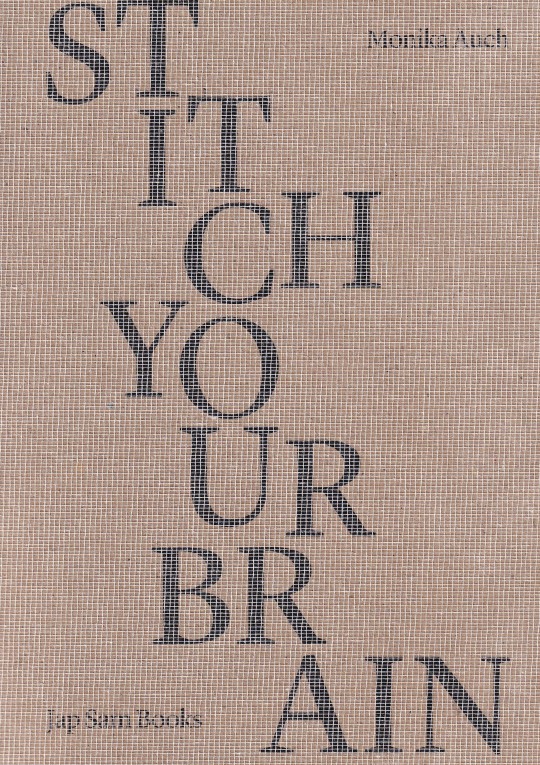
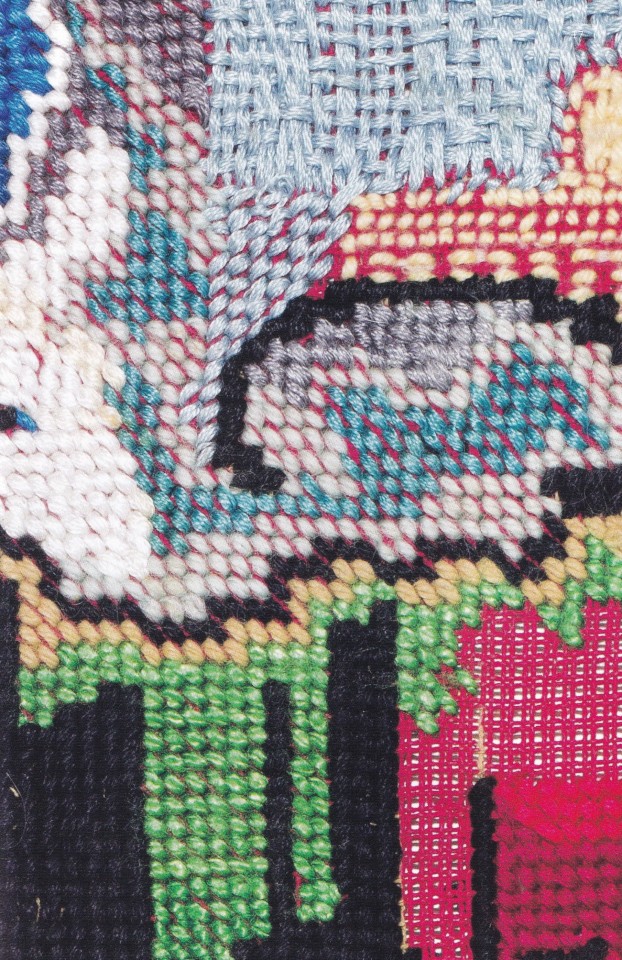
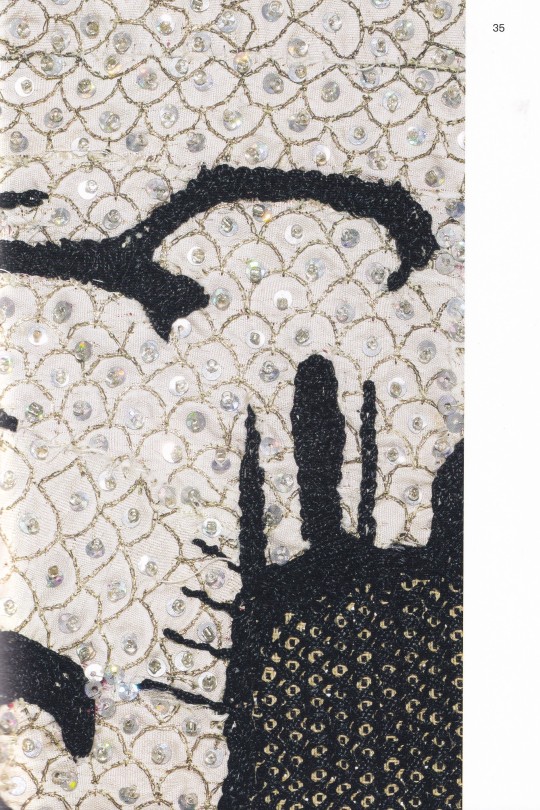

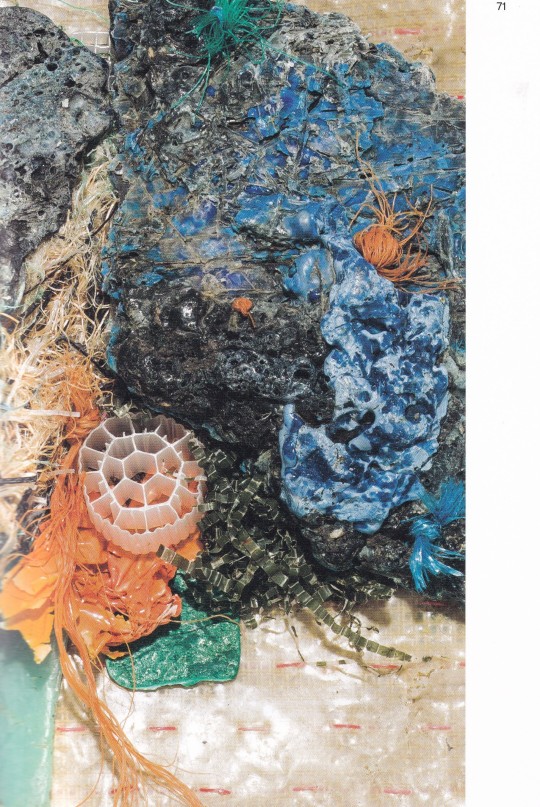




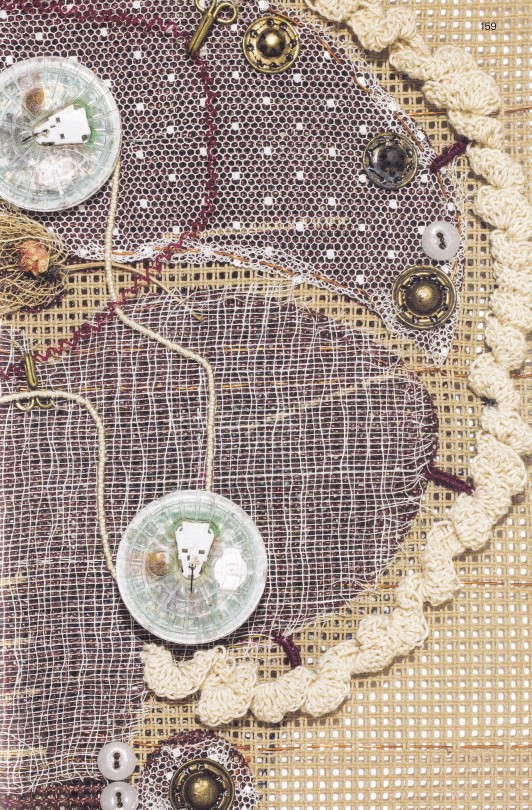
Stitch your Brain
Monika Auch
Jap Sam Books, Prinsenbeek 2023, 256 pages, softcover, 17x24cm, ISBN 978-94-92852-77-9
euro 30,00
Stitch Your Brain is a long-term study into the intelligence of the hand by artist and former medical doctor Monika Auch. The book reflects the results of the empirical study Auch worked on for the past decade about the importance of creating with your hands in our digital age and the effects of slow creation on neuro cognitive learning, health, and well-being.
The detailed images of a collection of 100+ stitched brains created by participants and their personal comments illustrate the influence of medical image making on body-identity and brain awareness. The creations are in fact a tactile, textile multitude of intimate self-portraits. At the same time, they are a dynamic documentation of changing visions and concerns on global issues throughout the past 10 years.
The data analysis and interpretation by Monika Auch provides insights in the relationship between creativity, stress management, age, well-being, and skill learning. Experts in art history, art, science interactions, and neuroscience who were involved early on in the project comment on the research and place it in a broader context. Contributions by Prof. R. Zwijnenberg, Dr. Marieke Hendriksen, Charlotte Steels (director of the Gawthorpe Textiles Collection), and Mané van Veldhuizen. The texts include topics such as the importance of coexistence of art and science and why they need each other, ethical and esthetical changes of self-perception due to modern brain research, the history of medical imagery of the brain and brain imagery using art and textile design in the past and present, among others.
16/02/24
8 notes
·
View notes
Text
Thank you Em from Neuro Wild
“⭐️ New ⭐️
This one is for us AuDHDers (autistic + adhd).
Let me start by saying that this infographic is very much how I work.
This is what happens to me, and this was the best way I could explain it. Right now I can’t actually tell if this is any good. I feel like I definitely missed things. A big clue that my mental capacity is super low.
I don’t know if this is a universal AuDHD thing. People are not the same, even if they share a neurotype. We all have our own stuff.
This might resonate with you.
It may not.
I’m interested to know if this is how you work as well.
Note: I do imagine that plenty of ADHDers will relate to this one. It’s because ‘doing the thing’ usually requires executive functioning skills, and ‘not doing the thing’ can also be related to dopamine deficiency.
Anyway. I put these slides together in 24 hours, a fun demonstration of our hyperfocus capabilities.
My brain is absolutely done.
It’s time to rewatch a comfort show.
Em ☺️🌈✌️
AuDHD SLP”









#asd#adhd#audhd#audhder#neurodivergent#neurodiversidad#neurodiverse stuff#educate#actually neurodiverse#actually neurodivergent#neurodivergente#neurodiversity#neurology#neurodivergence#neurodiverse artist#neurodivergent community
14 notes
·
View notes
Text
feb 17
How am I the one with the brain injury and all the other fucked up neuro stuff and yet I'm the one who's done any sort of organizing in this move?
Once again The Pile is at a state of nowhere to put anything. So not a single word how the baby buggy I am going to snazz up for my dolls can't go outside because there isn't room to get it out on the porch thru the walkway for the pile. But we have to be upset the wooden bead curtains were donated because they can't be hung up after spending years being the only thing in an over sized box.
I counted at least two more giant bags of empty plastic containers.
What this does mean is the next load(s) will concentrate on what's left of my books as well as anything else we can tell is predominantly mine.
The only good news from the last three years is that when it comes to moving a substantial quantity of books, unless you have strong friends or professional movers, is to use those thick reusable grocery store bags to carry and be able to stack your books.
Because I don't have anything like a book shelf, I had to part with those Ikeas our relationship was over, they are being stacked in a corner and the bags are helping to keep them tidier than they could be. And when I can finally get to figuring out what I'll do with them it'll be easier to move the bags.
Don't worry, both copies of ASIT are on top of my dresser. They had been safe in a tub surrounded by soft things.
We're looking at a couple of days of weather which would help to keep us here, still haven't spent a continuous 24 hours in our new home, maybe 18 at most, so she'll have to deal with The Pile and we'll hopefully have another wagon load to go out.
It's the going in to the shop and bringing home things that... Small plates we needed, the others we had broke, Wells Fargo ponies we don't have are allowed. Needing a couple of seashells to replace missing ones from a mirror frame appears to mean bring home every bag of seashells they ever sell there.
I'm going to try to watch that WCTH episode with Mr Stoneman some time today but aside from 1-2 storage runs I have real life business to attend to.
The ladybug in the porch squirrel's ear was nice to see yesterday :) I was thinking there weren't really any bugs around here, not even butterflies, and we had plenty of those little white ones at the last place.
2 notes
·
View notes
Text
I know this is sort of a rant, but if you're struggling, please read everything I've typed out. I'm a longterm epileptic and I genuinely want to help people struggling with this, especially ones with serious neuro conditions.
I would like to add onto this as someone whose been seeing a neurologist since I was five, both for epilepsy and migraine control.
Epileptics suffering: Check your medication. Most importantly
Dosage-How long have you been on your medication? Have you gained or lost weight? When was the last time you had a seizure? It may be time to dial back/increase the mgs your doctor prescribed.
Timing-I suffered major dizzy spells for a long time (walking like a drunk/falling down stairs major) because I didn't regulate the precision of when to take each dosage and often failed to eat breakfast. Ideal timing is a perfect division. One dosage? 24 hours. Two doses? As close to a perfect 12 hr schedule as your day allows.
Non-epileptics/no medication:
Get lab work/biopsy done. You may have an unaddressed allergy not showing major symptoms. I was 12 before my celiac was diagnosed. The migraines lessened (before the dizziness started) but the celiac mostly causes the "brain fog". OP pointed out the benefits of a dietician. I started a gluten-free diet and in a matter of a few months, I was doing much better in my classes, especially critical thinking such as math and science courses.
There are things your doctor will overlook or even not be trained in and ways you can help yourself.
If there are any epileptics on here struggling, please reach out. I'm no doctor, but I've been in your seat for sixteen years and am more than happy to answer basic questions, or just talk about the struggles you may be facing.
Okay I’m currently furious that migraines are often so blindly easy to treat and I had to find this out myself at the age of 26 when I’ve been to a neurologist since I was 11 lol so I’m about to teach you two neat and fast little tricks to deal with pain!
The first is the sternocleidomastoid muscle, or the SCM muscle.
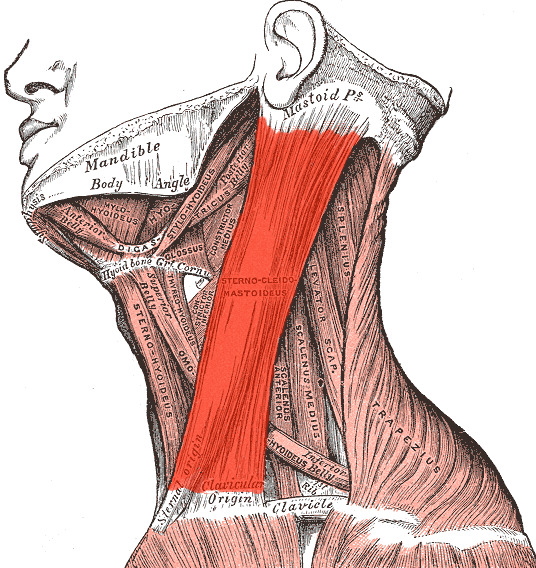
This big red section is responsible for pain around the eye, cheekbone, and jaw, as well as some temple pain. Literally all you have to do is angle your head down a little, angle it away from the side that hurts, and then you can gently pinch and rub that muscle. I find it best to start at the bottom and travel upwards. The relief is so immediate! You can increase pressure as you feel comfortable doing so.
Here is a short and easy video showing this in action
The second is a fast and easy stretch that soothes your vagus nerve, which is the nerve responsible for calming you down. The vagus nerve, for those unfamiliar, is stimulated by deep breathing such as yawning, sighing, singing, or taking a deep breath to calm your anger in a tense situation.
You can stretch this out by sitting up as straight as possible (this does not have to be perfect to work) and interlacing your fingers. Put your hands on the back of your head with your thumbs going down the sides of your neck and, while keeping your face forward, look all the way to one side with just your eyes. Hold that until you feel the urge to breathe deeply or yawn, or until you can tell there’s a change. Then do the same thing on the other side. When you put your arms down, you should clearly be able to turn your head farther in both directions. If the first session doesn’t get rid of your migraine, rest and repeat as many times as necessary. I even get a little fancy with it and roll my eyes up and down along the outer edge sometimes to stretch as much as I can.
If you need a visual here’s a good video on it. I know some of the language they use seems questionable but this is real and simple science and should not be discarded because it’s been adopted by the trendy wellness crowd!
I seriously cannot believe I didn’t hear a word of this from any doctor in my life. Additionally, if you get frequent recurring migraines, you may want to see a dietician. Migraines can be caused by foods containing histamines, lectin, etc. and can also be caused by high blood pressure in specific situations such as exercise, stress, and even sex.
If any of this information helps you I’d love to hear it btw! It’s so so fast and easy to do. Good luck!
124K notes
·
View notes
Text
Super Speciality Hospital for Neurosurgery in Howrah: Shree Jain Hospital

When it comes to top-notch healthcare in the field of neurosurgery, Shree Jain Hospital in Howrah stands out as a beacon of excellence. Offering advanced medical care and cutting-edge technology, the hospital has established itself as a leading super speciality centre for neurosurgical treatments. Here, expert care meets compassionate service, providing patients with the best possible outcomes.
World-Class Neurosurgical Services
At Shree Jain Hospital, neurosurgery is not just a service—it is a commitment to restoring health and enhancing lives. The hospital specializes in diagnosing and treating a wide range of neurological conditions, including:
Brain Tumors: Advanced surgical techniques to remove tumours with precision.
Spinal Disorders: Expertise in treating herniated discs, spinal cord injuries, and scoliosis.
Traumatic Brain Injuries: Comprehensive care for emergencies requiring immediate intervention.
Stroke Management: Prompt and effective surgical solutions to minimize damage.
Epilepsy Surgery: Procedures aimed at improving the quality of life for patients with seizure disorders.
Highly Experienced Team of Neurosurgeons
The hospital boasts a team of highly skilled neurosurgeons who bring years of experience and expertise to the table. Each surgeon is trained in advanced neurosurgical techniques and works collaboratively to deliver personalized care. With a focus on patient safety and well-being, they ensure that every procedure is performed with precision and care.
State-of-the-Art Technology
Shree Jain Hospital is equipped with cutting-edge technology to facilitate accurate diagnoses and effective treatments. Some of the advanced tools and facilities include:
High-Resolution MRI and CT Scans: For detailed imaging of the brain and spine.
Neuro-Navigation Systems: Ensures precise targeting during surgeries.
Advanced Operating Theatres: Designed for minimally invasive and complex neurosurgical procedures.
ICU Facilities: Dedicated neuro-intensive care units for post-operative monitoring and recovery.
Patient-Centric Approach
What sets Shree Jain Hospital apart is its patient-centric approach. The hospital’s team ensures that patients and their families are well-informed about the procedures and recovery process. From the initial consultation to post-operative care, the staff provides unwavering support and guidance.
Comprehensive Care Under One Roof
Shree Jain Hospital is more than just a neurosurgery center; it is a comprehensive healthcare institution offering:
Multi-Speciality Services: Collaboration between departments to address complex cases.
Rehabilitation Programs: Tailored plans to aid in recovery and restore mobility.
Emergency Services: 24/7 trauma care for critical neurological conditions.
Why Choose Shree Jain Hospital for Neurosurgery in Howrah?
Proven Track Record: A history of successful neurosurgical procedures.
Renowned Specialists: Experienced surgeons with expertise in advanced techniques.
Affordable Care: World-class treatments at competitive costs.
Convenient Location: Centrally located in Howrah for easy access.
Compassionate Service: A dedicated team that prioritizes patient comfort and recovery.
Testimonials from Patients
Many patients have shared their positive experiences at Shree Jain Hospital. From life-saving surgeries to compassionate care, their stories reflect the hospital’s unwavering commitment to excellence. “Thanks to the expert neurosurgery team at Shree Jain Hospital, I am now living a pain-free life,” says one grateful patient.
Conclusion
If you or a loved one are seeking advanced neurosurgical care, Shree Jain Hospital in Howrah is the place to trust. With its combination of cutting-edge technology, skilled surgeons, and patient-focused services, the hospital ensures the best possible outcomes for all neurological conditions.
Contact Shree Jain Hospital today to schedule a consultation or learn more about their comprehensive neurosurgery services. Your health deserves nothing but the best!
#Super Speciality Hospital for Neurosurgery in Howrah#Hospital for Neurosurgery in Howrah#Neurosurgery Hospital in Howrah#shree jain hospital
0 notes
Text
Best Hospital for Brain Surgery: Advanced Neurosurgical Care at Preethi Hospitals, Madurai
Brain surgery is one of the most complex medical procedures, requiring cutting-edge technology, skilled surgical teams, and advanced post-operative care. Whether it’s a brain tumor, aneurysm, epilepsy, or traumatic injury, selecting the right hospital is critical for a successful outcome. If you are looking for the best hospital for brain surgery, Preethi Hospitals, Madurai, stands out for its expertise in neurosurgery, state-of-the-art facilities, and comprehensive patient care.
Understanding Brain Surgery: Why Expertise Matters
Brain surgery involves intricate procedures to treat disorders affecting the brain, nervous system, and surrounding structures. Since the brain controls vital functions, even the smallest surgical intervention demands extreme precision. Neurosurgical expertise, high-end diagnostic tools, and advanced post-operative monitoring are crucial for ensuring the best outcomes.
At Preethi Hospitals, Madurai, patients receive expert care backed by modern neuro-navigation systems, intraoperative imaging, and minimally invasive techniques, making brain surgeries safer and more effective.
Why Preethi Hospitals is the Best Choice for Brain Surgery
Choosing the right hospital can make a significant difference in recovery and overall health. Here’s why Preethi Hospitals, Madurai, is recognized as a leading center for brain surgery:
Cutting-Edge Technology for Accurate Diagnosis
A precise diagnosis is the foundation of successful brain surgery. Preethi Hospitals is equipped with:
Advanced MRI & CT Scanners for high-resolution brain imaging
Electroencephalography (EEG) for epilepsy and seizure analysis
Digital Angiography to detect vascular abnormalities in the brain
Neuro-navigation Systems for pinpoint accuracy during surgery
These technologies help neurosurgeons plan and execute procedures with high precision and minimal risk.
Comprehensive Neurosurgical Treatments
Preethi Hospitals provides a wide range of brain surgeries, ensuring specialized treatment for various conditions, including:
Brain Tumor Surgery: Removal of benign and malignant tumors with advanced microsurgical techniques.
Aneurysm Clipping & Coiling: Treatment of brain aneurysms to prevent ruptures.
Traumatic Brain Injury (TBI) Surgery: Emergency interventions for head injuries.
Epilepsy Surgery: Minimally invasive procedures to control seizures.
Hydrocephalus Treatment: Shunt placement for cerebrospinal fluid drainage.
Endoscopic Brain Surgery: Minimally invasive procedures for deep-seated brain conditions.
Minimally Invasive Brain Surgery for Faster Recovery
Traditional brain surgeries often require long recovery periods. However, Preethi Hospitals specializes in minimally invasive neurosurgery, offering patients:
Smaller incisions and less blood loss
Reduced post-operative pain
Shorter hospital stays and quicker recovery times
Using endoscopic and robotic-assisted techniques, Preethi Hospitals ensures better outcomes with minimal risks.
24/7 Emergency Neurosurgical Care
Brain-related emergencies like strokes, brain hemorrhages, and traumatic injuries require immediate medical intervention. Preethi Hospitals has a dedicated neurosurgical emergency unit equipped with:
Rapid response neurology & neurosurgery teams
Immediate CT/MRI scanning for fast diagnosis
State-of-the-art neuro-intensive care units (NICU)
Patients receive timely, life-saving treatment, reducing complications and improving survival rates.
Dedicated Neuro ICU for Post-Surgical Recovery
After brain surgery, critical post-operative monitoring is essential for successful recovery. Preethi Hospitals offers:
Specialized Neuro-ICU with round-the-clock monitoring
Advanced ventilator and life-support systems
Dedicated rehabilitation programs for neurological recovery
With a multidisciplinary approach, patients receive personalized care to restore brain function and overall well-being.
The Role of Rehabilitation in Brain Surgery Recovery
Brain surgery is just the first step toward recovery. Post-surgical rehabilitation plays a vital role in restoring normal functions like speech, movement, and cognitive abilities. Preethi Hospitals, Madurai, offers:
Physiotherapy for motor skill improvement
Speech therapy for communication difficulties
Cognitive therapy for memory and thinking skills
Psychological support for emotional well-being
With customized rehabilitation plans, patients regain independence and improve their quality of life.
Why Patients Trust Preethi Hospitals for Brain Surgery
Experienced Neurosurgical Team
A team of highly trained neurosurgeons and specialists ensures safe and effective procedures.
Advanced Infrastructure
From modern operation theaters to high-tech ICUs, Preethi Hospitals offers world-class medical facilities.
Patient-Centered Approach
Personalized care, detailed consultations, and transparent treatment plans build trust and confidence in patients.
Affordable & Accessible Care
Despite offering top-tier medical services, Preethi Hospitals ensures cost-effective treatment for all patients.
Conclusion
When it comes to brain surgery, choosing the right hospital is critical for a successful outcome. Preethi Hospitals, Madurai, stands as a leader in neurosurgical excellence, providing advanced treatments with cutting-edge technology, experienced specialists, and world-class post-surgical care. Whether it’s a complex brain tumor removal or an emergency neurosurgical procedure, Preethi Hospitals is committed to delivering the best possible care with precision, safety, and compassion.If you or a loved one requires brain surgery, trust Preethi Hospitals, Madurai, for expert care and a smooth recovery.

0 notes
Text
How Virtual Reality is Transforming Healthcare: Diagnostics, Surgery, Pain Management & More
How Virtual Reality is Transforming Healthcare
Virtual Reality (VR) is significantly reshaping various aspects of healthcare, including diagnostics, surgery, pain management, and rehabilitation. This technology provides immersive experiences that enhance patient care, medical training, and therapeutic interventions.
1. Diagnostics
VR is increasingly utilized in diagnostic processes, particularly in neuroscience. For example, VR headsets are employed for neuro-optical diagnostics, allowing for safer and more controlled environments to study brain-behavior interactions. This application has shown promise in enhancing the accuracy and efficiency of neurological assessments.
2. Surgery
In surgical settings, VR offers a platform for immersive training simulations. Surgeons can practice complex procedures in a risk-free environment, improving their skills before performing actual surgeries. This not only enhances their confidence but also reduces the likelihood of errors during real operations. Furthermore, VR aids in preoperative planning by providing three-dimensional reconstructions of patient anatomy, which can lead to better surgical outcomes.
3. Pain Management
VR has emerged as a transformative tool in pain management. By immersing patients in engaging virtual environments, VR effectively distracts them from pain during procedures and in chronic pain situations. Studies indicate that patients using VR report a significant reduction in pain perception—up to 24%—demonstrating its potential as an alternative to traditional pain relief methods. This approach is particularly beneficial for patients undergoing painful treatments such as chemotherapy or burn care.
4. Rehabilitation
Rehabilitation programs enhanced by VR offer personalized experiences tailored to individual patient needs. Patients engage in gamified exercises that not only make therapy enjoyable but also improve adherence rates by approximately 30% compared to traditional methods. Additionally, VR allows physical therapists to monitor patients' progress in real-time and adjust treatment plans accordingly, facilitating more effective recovery from injuries or surgeries.
5. Mental Health Treatment
VR is also making strides in mental health care by providing exposure therapy for conditions such as PTSD and anxiety disorders. This technology allows patients to confront their fears in a controlled environment, which can lead to significant reductions in symptoms over time. Moreover, VR's ability to create calming environments can help alleviate anxiety during medical procedures, contributing to a more holistic approach to patient care.
6. Telemedicine and Remote Care
The integration of VR into telemedicine enhances remote consultations by creating interactive environments where healthcare professionals can conduct thorough assessments without geographical limitations. This is particularly beneficial for patients in rural areas who may lack access to specialized care. The accuracy of remote diagnoses has been shown to improve by 20% when VR is utilized, ensuring that patients receive quality care regardless of their location.
Read More:
Read More On: How Virtual Reality is Transforming Healthcare
Conclusion
The applications of Virtual Reality in healthcare are vast and continue to expand as technology evolves. From improving diagnostic accuracy and surgical training to enhancing pain management and rehabilitation efforts, VR is set to play a crucial role in the future of healthcare delivery. Its ability to provide immersive experiences not only enhances patient engagement but also promotes better health outcomes across various medical fields.
0 notes
Text
Reader - Sources and Significance
1. Kuc, K., 2016. Karol Irzykowski and Feliks Kuczkowski: (Theory of) Animation as the Cinema of Pure Movement. Animation, 11(3), pp. 284-296. Available at: https://doi-org.ezproxy.herts.ac.uk/10.1177/1746847716660685
In this article, the author introduces polish literary critic Karol Irzykowski and his theory of animation cinema which he considered to be “Cinema of pure movement”, it chronicles the development of these theories which was largely influenced by the works of polish Animator Felix kuczkowski and his principles of “synthetic visionary films”. The article lays down what Irzykowski believed to be the unique aspects of film, its similarities and differences to other art forms, how through animation can cinema be considered an art form with its insistence on movement and the freedom granted to the artist, extensive and intensive cinema and how filmmakers during the german golden age were able to use aspects of animation to transform their live action films into works of art.
I find this source useful as it deepens my understanding of what makes animation cinema unique compared to live action cinema along with introducing me to a more experimental and raw approach to animation and cinema and the artists that occupy that space that I can learn from.
2. Ben Labidi, I., 2021. Representation and emancipation: Cinema of the oppressed. International Journal of Cultural Studies, 24(2), pp. 250-265. Available at: https://doi.org/10.1177/1367877920959338
In this article, The author explores the idea of media being a tool used to transform the social consciousness, to fight racial biases and to act as a form of resistance against colonization. Drawing on the works of palestinian critic Edward Said, his analysis of representation and its relation to colonialism, the article does a deep dive into intricacies of representation, fact checking biased media representation and the relation between emancipation and representation. It explores through examples, how palestinian filmmakers have turned to cinema to provide a more critical, human and accurate representation of life as a palestinian, borrowing principles of second and third cinema movements whose definitions are also expanded upon.
The topic of representation is one that is very close to me as a minority myself and through the article I was able to understand how as a filmmaker I can better approach the topic, understanding the intricacies of representation and how other minority filmmakers have approached the subject.
3. Lin, J., Swart, J. and Zeng, G., 2023. Theorising TikTok cultures: Neuro-images in the era of short videos. Media, Culture & Society, 45(8), pp. 1550-1567. Available at: https://doi.org/10.1177/01634437231202167
In this article, the author using Dutch film theorist Patricia Pister’s theory of “neuro-images” discusses tiktok as more than just a platform, but as a cultural form that is deeply participatory, platform specific and shaped by the algorithm. It discusses how with its large database of user data, the algorithm and the users engage in an almost give and take relationship to produce personalized stories about people and the world. It likens tiktok and its “brain screen” interface to a kind of automated cinema, where everyday life is captured and augmented, arranged into categories that span multiple genres, with its own unique sense of time and unpredictability.
The article is relevant to my practice as it helps me understand new ways in which technology affects how consumers interact with content, the new creative avenues that open in terms of storytelling and interactivity and how the technology itself influences the content.
4. Ehrlich, N. (2019) ‘Conflicting realisms: animated documentaries in the post-truth era’, Studies in Documentary Film, 15(1), pp. 20–40. doi: 10.1080/17503280.2019.1663718.
In this article, The author explores animation's role as a contemporary documentary aesthetic and how it tackles established ideas of realism. It explores the traditional struggles of animation to be seen as real. The author analyses the role of realism and truth today in a post-truth world that values “truthiness” and explains how animation can be an effective tool in navigating this landscape. It analyses realism through the lens of two conflicting theories of “familiar” and “defamiliar” with examples highlighting both the strengths that animation brings to the representation of the real and the pitfalls that could present itself with increasing numbers of such documentaries and content.
This article is relevant to my work as an animator and filmmaker as it tackles existing notions and biases of what animation can be and represent in terms of real, how audience's perception of truth have evolved and how this helps animators to bring forth new complex ways of representation that aim to not simply inform but go deeper.
5. Yoon, H. (2015) ‘Globalization of the animation industry: multi-scalar linkages of six animation production centers’, International Journal of Cultural Policy, 23(5), pp. 634–651. doi: 10.1080/10286632.2015.1084298.
In this article, the author examines animation production centers around the world. Identifying them, their development over time and changes, the distribution of types of knowledge across different production centers and the kind of work that is also distributed based on that knowledge. The article also examines and finds reasons for the various cultural and economical factors that affect animation production in the identified centers, the local and global linkages and the different ways studios are attempting to push the market forward.
This article is important to my work as a professional in the animation industry to understand the types of markets that exist for the medium, its global and local links, how the cultural and economics combine to determine the types of creative work that is practiced in the market.
6. Goudarzi, M., Jamasbi, S. M., Safoora, M. A. (2022) ‘A Semiotic Analysis of Camera Movement in Animation Works of Disney Company*’, Quarterly Review of Film and Video, 41(2), pp. 225–243. doi: 10.1080/10509208.2022.2108689.
In this article, the author uses Charles Sanders Pierces ideas of semiotics and uses his widely used threefold classification of iconic, indexical and symbolic to examine the movement of the camera in cinema. It gives a detailed definition of sign and each of the classifications and its potential for use in cinema and particularly animation to create meaning and enrich the narrative. The author also introduces Jean-Francois Lyotard’s different types of movement in cinema and expands on it and talks about the camera movement as part of the semiotic system, the limited ways it has been explored so far as well as introducing parameters for the exploration, dividing into the threefold classification and analyzing it with examples from both live action and animation films with an semiotic analysis of how Disney uses camera movement to convey a deeper meaning and concept of their film.
This article is important to my work as a filmmaker since it helps to expand on camera movements and to use it for deeper meaning in the narrative. The case study with disney movies was particularly insightful as an animation filmmaker as it really highlights the potential of the virtual camera in use for animation for more complex storytelling.
7. Mohd Hasri, U. H., Md Syed, M. A. and Runnel, C. (2020) ‘Transmedia storytelling in the Malaysian animation industry: embedding local culture into commercially developed products’, Atlantic Journal of Communication, 30(2), pp. 115–131. doi: 10.1080/15456870.2020.1835909.
In this article, the author discusses how transmedia storytelling has been used to success in the Malaysian animation industry. It provides an overview of transmedia storytelling and its different characteristics, how transmedia storytelling can be developed and implemented. The article compares the development of the Japanese animation industry, considered a pioneer in transmedia storytelling to highlight the possible influences on the Malaysian animation industry. The article chronicles the development of transmedia storytelling to a mainstream practice in the Malaysian industry with examples, highlighting both government and private stakeholders influence to promote local culture,values and traditions and increase the marketability of the local product which has propelled the industry to new heights.
This article is useful for me as an animator from India, who has a sizable animation industry but one that does not deal in creative original content. It highlights how a small original creative market was able to find success by embracing its cultural roots to attach itself to the audience and how important government support can be as well.
8. Weber, I. and Zhang, Y., 2023. Adapting, modifying and applying cinematography and editing concepts and techniques to cinematic virtual reality film production. Media International Australia, 186(1), pp. 115-135. Available at: https://doi.org/10.1177/1329878X211018476
In this article, the author explores cinematic virtual reality (CVR), touted by Lev Manovich as the inheritors of the development of cinematic technique and theory. The article analyses cinematic virtual reality as a new cinematic frontier but with the context of existing practices, components and thinking of traditional 2D filmmaking. The article identifies cinematography and editing as the two main components of innovation for cinematic reality and using the example of CVR film “calling” and the experience of the director, presents various methods in which the traditional filmmaking language can be applied in the case of cinematic virtual reality. Through an analysis of the directors process, it also suggests a methodology, the possible dangers of an unexplored technology as well as technological developments that can help new aspiring directors to aid in their own CVR work.
9. Romanowski, M., Sheldon, Z. and Shafer, D. M. (2019) ‘Parasocial interactions and digital characters: the changing landscape of cinema and viewer/character relationships’, Atlantic Journal of Communication, 29(1), pp. 15–25. doi: 10.1080/15456870.2019.1702550.
In this article, the author attempts to understand whether parasocial interactions differ when the characters are completely CG, a hybrid or when they are played by a real human, an actor. Seen as a by-product of character creation for media entertainment, the article explores development and types of parasocial interactions, its importance to success of the media and differences to parasocial relationships. It also highlights notable CG characters that have had a lasting impact in the culture and visual effects technology. The study offers an encouraging conclusion to filmmakers regarding the believability and relatability of their characters, whether they are CG, hybrid or real actors.
this article helps to reinforce the idea that believability and ideas of realism are not impossible to achieve through the medium of animation and mix media, which is liberating for an animation filmmaker.
10. Krämer, N. C. et al. (2019) ‘I feel what they say: the effect of social media comments on viewers’ affective reactions toward elevating online videos’, Media Psychology, 24(3), pp. 332–358. doi: 10.1080/15213269.2019.1692669.
In this article, It conducts a study to understand how comments on social media, particularly youtube, affect the emotional responses to non-hedonic entertainment videos, which explore deeper conditions of being human such as acts of kindness. It also studies whether the comment or the international aspect of the comment is more important .Through a thorough analysis it comes to the conclusion that they do affect the emotional responses, with negative comments reducing the feelings of emotional elevation while positive comments enhance the impacts of videos online.
This article is important for me as a content creator and filmmaker who wants to venture into the indie scene which is largely dominated by Youtube and social media in general. To understand how the community aspect will influence how my work will be perceived and how to understand the negative trends in order to correct them.
0 notes
Text
Sukino Healthcare offers state-of-the-art neuro rehabilitation centers in Bangalore, Kochi, and Coimbatore, providing comprehensive care for patients recovering from neurological conditions. With expert physiotherapists, advanced equipment, and personalized therapy plans, we focus on improving mobility and quality of life. Our holistic approach includes cognitive therapies, speech therapy, and emotional support. We cater to post-stroke recovery, traumatic brain injuries, and other neurological disorders. Sukino ensures a compassionate, patient-centric environment for faster and effective recovery.
#neuro rehabilitation#neuro rehabilitation centre#neuro rehabilitation in india#neuro rehab service in india#neuro rehab center#benefits neuro rehabilitation#traumatic brain injuries#cognitive therapies#speech therapy
0 notes